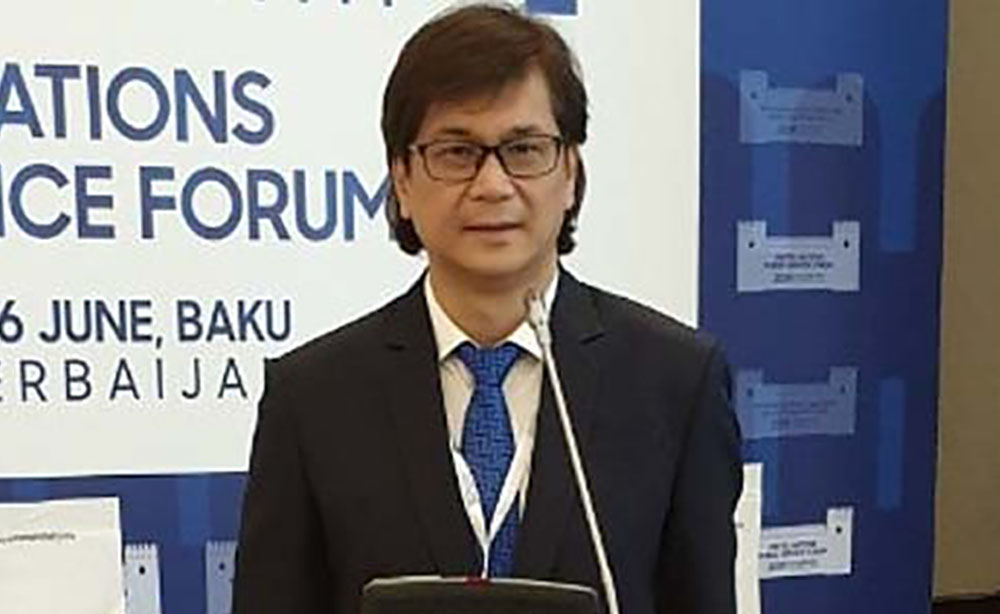Mayors want more businesses to operate
METRO Manila mayors have agreed on a “flexible” modified enhanced community quarantine (MECQ) for the National Capital Region (NCR) after April 30 to sustain the downward trend in coronavirus disease (COVID-19) cases in the metropolis.
Metro Manila Development Authority (MMDA) chairman Benhur Abalos yesterday also announced that curfew hours in the region will be adjusted to 10 p.m. to 4 a.m. starting May 1.
Abalos, concurrent chairman of the Metro Manila Council, said the 17 Metro mayors agreed on Tuesday night on the “flexible” or “hybrid” MECQ in the metropolis, which will allow more businesses to operate while retaining lockdown restrictions and strict border control in and out of the NCR.
Abalos said the flexible MECQ option was proposed by Health Undersecretary Maria Rosario Vergeire during a meeting with the local executives.
Metro Manila and the four provinces of Bulacan, Cavite, Laguna and Rizal, collectively called the NCR Plus, are under the MECQ classification until April 30. The NCR Plus was placed under the most restrictive ECQ from March 29 to April 11 as the government rushed to control the surge in COVID-19 cases which overwhelmed hospitals and other medical facilities in the bubble and nearby provinces.
Yesterday, the Department of Health reported 6,895 additional cases of COVID-19, which brought the country’s total number of cases to 1,020,495. Recoveries was reported at 935,695 with 10,739 new; while deaths breached the 17,000-mark with 115 new fatalities.
Abalos said the flexible MECQ will allow government more time to address the bubble’s stressed healthcare system and at the same time give businesses enough elbow room to restart economic activities.
“The recommendation was based on data presented by health experts and also from NEDA as presented by Sec. Karl Chua. Through hybrid MECQ, we are hitting the middle ground.
There will still be strict border controls to avoid transmission, but at the same time there will also be additional economic activities,” Abalos said.
“That’s why we want to do it gradually. By opening some businesses, we are also addressing the dilemma and hunger of those who lost their jobs,” he said.
Abalos said Metro mayors had three options: reverting to ECQ, retaining MECQ or imposing the flexible or hybrid MECQ, with additional economic and business activities to be classified and approved by the Department of Trade and Industry.
He said the MMC has submitted its recommendation to the Inter-Agency Task Force on the Management of Emerging Infectious Diseases and would defer to the final decision of President Duterte on the region’s next quarantine classification for next month.
Likewise, Abalos said the 17 mayors have approved and signed Resolution 21-09 Series of 2021 adjusting the uniform curfew hours in Metro Manila to 10 p.m. to 4 a.m. starting on May 1. The current curfew in the 17 Metro LGUs is from 8 p.m. to 5 a.m.
COVID CURVE
The independent OCTA Research Group yesterday said the Philippines is still far from “flattening the curve” despite the declining number of COVID-19 cases.
OCTA’s Dr. Ranjit Rye said the downward trend is not an indication that the country has finally stopped the transmission of the virus.
“We are a long way from that. And maybe that discussion won’t be relevant for the next few months,” he said, even as he added that the downward direction could be sustained if the current quarantine lockdown classification is maintained and compliance with minimum health standard and other protocols are retained.
Rye warned a shift to looser lockdown levels could reverse the gains in terms of the lower number of COVID-19 cases and virus reproduction rate.
“Our position at OCTA is we cannot transition yet to GCQ as we speak, because the trend can easily be reversed. If it is reverses, the situation in India could happen in Metro Manila,” he said.
He, however, assured the public that the Philippine situation is far from the situation in India because the government is continuously improving the healthcare system, tracing capability, and increasing isolation facilities.
Rye also said reopening the economy would have to wait, if possible, until confirmed COVID-19 cases reach around 2,000 cases per day in Metro Manila to stop overwhelming the hospitals.
“We have to get cases below 2,000 cases, I think a day in NCR, we can manage. That is based on our studies at OCTA. Anything over 2,000 cases -overwhelm the hospital system,” he said.
Fellow OCTA group member Dr. Guido David said the country’s COVID-19 reproduction rate is now at 0.85 while the average number of new cases in Metro Manila is at 3,500.
He said these are significant improvements that can be attributed to the successful community quarantine in the past weeks.
TRAVEL BAN
The Bureau of Immigration yesterday said the travel restrictions for travelers coming from India is not “nationality- specific.”
BI Port Operations Division Chief Carlos Capulong said the ban applies to all travelers coming from the country.
“We are conducting 100 percent passport inspection to determine the travel history of an arriving person. If we see that a traveler has been to India within the last 14 days, then he or she will be excluded and boarded on the next available flight back to his or her port of origin,” Capulong said.
The IATF on Tuesday approved recommendations to restrict the entry of travelers, including Filipinos, coming from India or those with a travel history to the country within the last 14 days preceding their arrival to the country. The ban takes effect today and will stay until May 14.
Several sectors recommended the travel restriction ban following the detection and spread of the India variant of the COVID-19 virus.
India is experiencing a surge in COVID-19 cases, with its daily death toll reaching more than 200, 000. The surge has strained the country’s medical and health care system, with hospitals turning away patients due to shortage of beds and oxygen supplies. — With Jocelyn Montemayor and Ashzel Hachero


